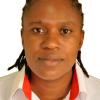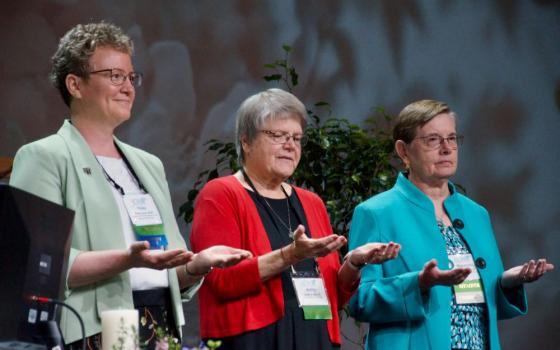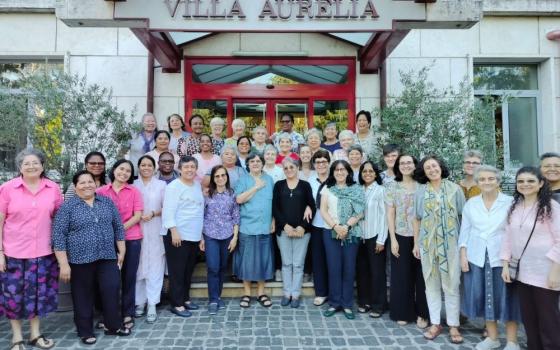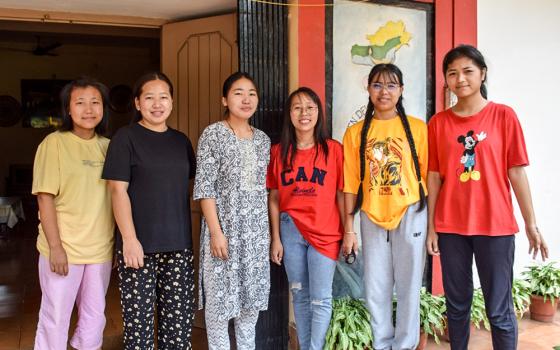A Class 8 learner at St. Oda School solves a math problem using a slate and cube kit. The school's students follow the same curriculum and take the same examination as typical learners in the country. (GSR photo/Lourine Oluoch)
Jane Juma Ochola recalled having a headache as a fourth grader, and how, within a week, she was completely blind.
"It was difficult for my parents to accept," said Ochola, who attended St. Oda School for the Visually Impaired from 1988 to 1994. "My mother used to cry nonstop until I joined this school. That day that she brought me here, she learned that there are many other children who are also visually impaired. Initially, she thought she was the only one having a child with disability. When she saw those other children here, somehow, she healed."
At the school run by the Franciscan Sisters of St. Anna, Ochola had to relearn some basic skills, such as how to move around independently, take care of her daily hygiene and read and write Braille to continue her education.
Today, Ochola is a teacher at St. Oda School, one of six institutions the congregation runs in Kenya that prioritize educating children with disabilities.
"I really benefited from this school, and they made me to become who I am now," she said. "Without them, I could not have made it, because I came from a very humble family."
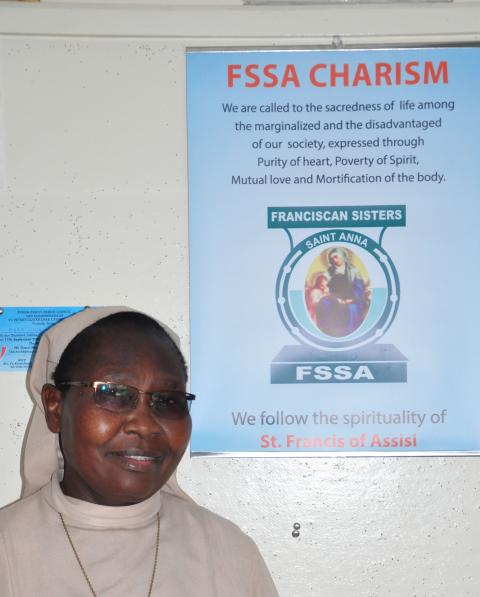
Sr. Mathilde Omondi, the Kisumu regional superior of Franciscan Sisters of St Anna (GSR photo/Lourine Oluoch)
The Franciscan Sisters of St. Anna also run St. Anthony Integrated School in Awasi, St. Joseph Nyangoma Technical Training Institute for the Deaf Nyang'oma, St. Martin de Porres Special School for learners with cerebral palsy, St. Dymphna for the physically challenged and Nico Hauser Secondary School for the Visually Impaired.
Located in Kisumu and Siaya counties, the schools also admit children with special needs from neighboring countries, such as Uganda.
"In many families, children with disabilities are hidden away from people," said Sr. Mathilde Omondi, the congregation's regional superior in Kisumu. "They are not given any attention. They grow up neglected, and some even die. Many parents who have such children also don't want to take them to school."
Children with disabilities account for about 11 percent of Kenya's population, and mostly come from the country's rural region, according to the 2018 National Survey on Children with Disabilities and Special Needs in Education. The survey also found that both enrollment and dropout rates for this demographic were disproportionately high when compared to able-bodied children.
For 50 years, Kenya's Franciscan Sisters of St. Anna have been working to change that.
Pupils walking around St. Oda School for the Visually Impaired. When children arrive at the school, they undergo an orientation and mobility process so that, with time, they can move around independently. (GSR photo/Lourine Oluoch)
Integrated learning
Sr. Marcela Auma, administrator of St. Anthony Integrated School in Awasi, Kisumu County, is always on the move.
In addition to typical pupils, the Franciscan Sister of St. Anna has 37 children (ages 7 to 20) with disabilities under her care, including students with physical disabilities, autism, Down syndrome, cerebral palsy, and others who are deaf and blind.
While some of these children can learn to do some tasks independently — even attend typical classes — others depend on caregivers around the clock.
St. Anthony Awasi was established in 2014 as an integrated school that would admit both disabled and non-disabled learners, a factor Auma said has been advantageous to children with disabilities.
"The regular children love them, they walk with them, move with them, they help feed them and talk with them," she said. "This helps them come out of loneliness."
Four years after the Franciscan sisters arrived in Kenya from the Netherlands, they teamed up with Millhill missionary Fr. John va de Ouderaa in 1962 to set up St. Mary's School Nyangoma for the deaf. The school admitted children with hearing disabilities from nursery school age through eighth grade. (The sisters later helped establish Fr. Ouderaa Secondary School for the hearing impaired in honor of the priest.)
"In those days, the sisters would go to the villages to get these children who were hearing impaired because their parents did not value education for these children and never thought they could go to school and learn," said Sr. Celestine Mangiti, principal of St. Joseph Technical Training Institute for the Deaf.
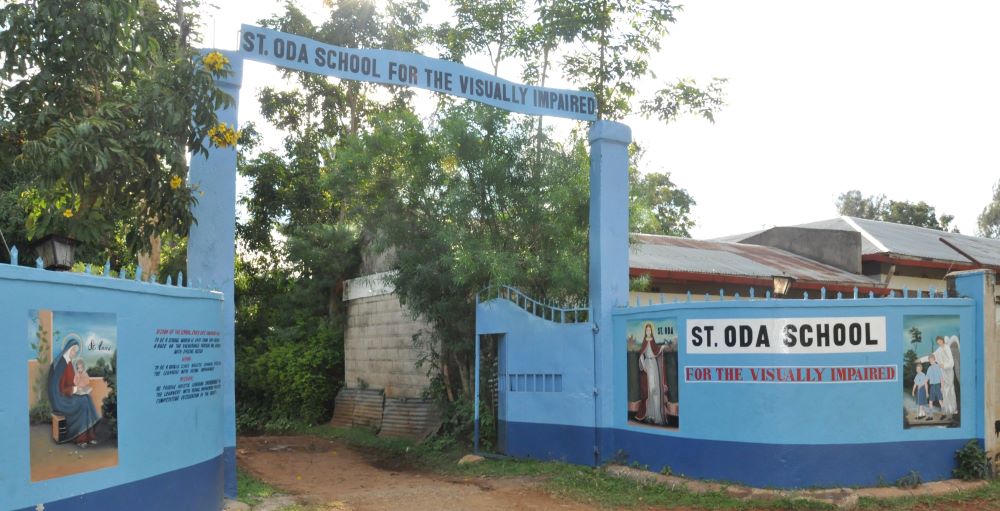
St. Oda School for the Visually Impaired was established by Franciscan Sisters of St. Anna in 1961. It admits learners ages 4 to 20. (GSR photo/Lourine Oluoch)
The school was founded in 1965 to provide secondary education to students who were deaf.
"After they were done with their primary education they would go back to the same home, with parents who did not value them," Mangiti said. "They would go back to zero, as if they had not learned anything."
The sisters, then, found it necessary to start a vocation training center.
"You don't just give such a student any course for the sake of letting the person go through the system," Mangiti continued. "You are giving something that will enable them to acquire skills that can be useful out there and enable them to earn a living," aspiring to the institute's motto: "Education for self-reliance."
Today the institution also admits students without hearing impairments — as well as those with other disabilities — "so that these two can interact and get used to one another, so that when they go out to look for jobs, they are used to that world, the natural environment," Mangiti said.
A girl reads Braille at St. Oda School for the Visually Impaired. (GSR photo/Lourine Oluoch)
Challenges exist
One of the biggest challenges the congregation faces is that majority of children with disabilities come from poor families, meaning few are able to pay the school fees.
Still, "we cannot send the child away," Omondi said, adding that the sisters must sometimes rely on donors and support from their other institutions.
Another challenge is that the management of some of the schools has been taken over by lay people who often do not understand the vision of the institution as intended by the congregation, Omondi said.
"The schools became public, so we are not completely in charge. Some of us were being groomed to take over, but the requirements are also changing," with sisters sometimes earning master's degrees to qualify, yet still not meeting job requirements.
The congregation also works to overcome the stigma that children with disabilities face in their community.
"In many families, the blind, the deaf and the lame are hidden away from people; they are not given any attention," Omondi said. "Many parents who have such children don't want to take them to school."
From left: Edwin Ogenga, Charles Oyienya, Gabriel Okech, and Jane Juma Ochola, teachers at St. Oda School for the Visually Impaired. Ochola and Okech were previously students at the school. (GSR photo/Lourine Oluoch)
Charles Oyienya, a senior teacher at St. Oda who is also visually impaired, said that Africans often "believe a disability is accompanied by a curse: 'This person must have been cursed.' Then they identify you, as the mother of a blind person, [that] you must have done something wrong."
In the past, the school had a White Cane Day, during which the school showcased activities a blind person can do — such as cooking and cleaning — and then discussed education practices for children with visual impairments. (St. Oda's sponsors no longer fund this event.)
"During those days, we saw so much enrollment as a result of that, because there are many people who still keep their children indoors when they realize they are blind,” Oyienya said. “This kind of awareness made them open up and bring their children to school.”
Advertisement
Students turned teachers
Both Gabriel Okech and Ochola are St. Oda students turned teachers.
Okech joked that getting into St. Oda School for the Visually Impaired opened other doors for him, noting that with sight, he might not have attended secondary school. Because he had lost sight, "and they knew I could not even ride a bicycle as a bodaboda [bicycle-taxi], so I had to study hard."
He and Ochola believe their presence as teachers motivates students.
"The learners see us teaching them successfully and they also want to become what we are today," Ochola said.
Mangiti believes that all the students can learn. "We have graduates who are now teaching even in secondary schools who are deaf from childhood.
"Parents should not write off any of their children."
